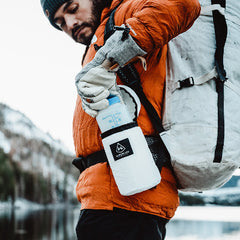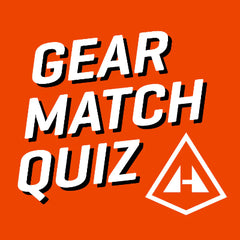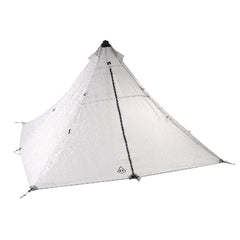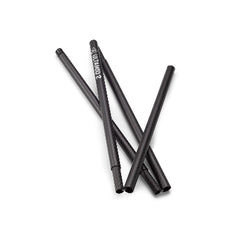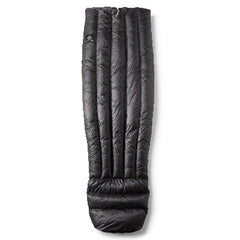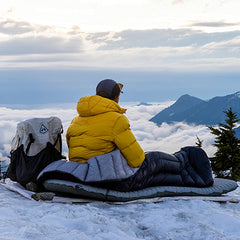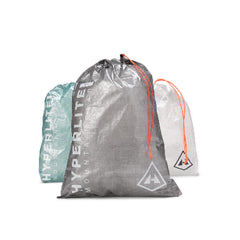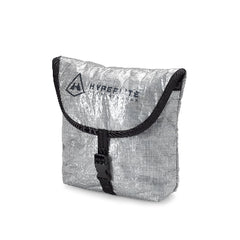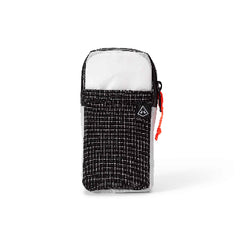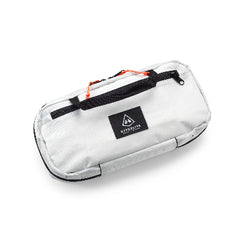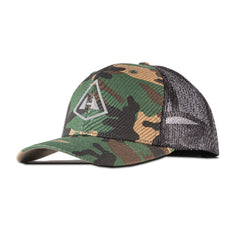Words by Nash Calvin, Photos by Bridget Williams, Mike Borchard, Miah Watt

Nash Calvin, one of our R&D Team's esteemed Product Designers, loves a good challenge. Look no further than the products he's had a hand in that broadened our offerings in established pursuits, like the more multi-sporty day pack, the Elevate 22. Or the 35-liter framed (Waypoint 35) and frameless (Contour 35) long-distance backpacks for today's hikers who prefer super streamlined setups. The Roll-Top Food Bags and Kit, The Zippy organizational pouches, and the Insulator bottle wrap? Also, his. One could argue the best example of him fearlessly venturing into uncharted territory for us is the Aero 28 fastpacking pack. And while he's no stranger to designing shelters–like the Splash Bivy, a freestanding tent was a first for him. But, just like every time Nash was presented with a new project, that wry smile made an appearance, and he cracked his knuckles and got to work.

SO, YOU'RE THE PROUD PAPA OF THE CROSSPEAK 2. WHAT'S YOUR QUICK
DESCRIPTION OF THIS TENT?
I would describe the CrossPeak 2 as a three-season, single-wall, freestanding shelter that boasts a huge amount of room and other great design features–all in one of the lightest designs on the market.


THE FREESTANDING TENT DESIGN HAS BEEN AROUND FOR A WHILE. WHAT WERE YOUR GOALS IN TAKING THAT PLATFORM AND REIMAGINING IT?
Freestanding tents are just a familiar design for many folks. A lot of us start backpacking with them, so we wanted to reimagine it by combining our knowledge of lightweight and durable materials. Those choices can be seen in the aluminum poles, pole sleeve construction that's a direct homage to some of the best tents in the world, and grommet hardware that's coupled with Dyneema webbing. We were able to perfectly blend some tried and true sentiments and systems with our new school fabrics.

HOW DID YOU SET ABOUT MODELING SOME OF YOUR INTENTIONS?
We did it in our studio's classic rapid prototyping fashion. After sketching out and presenting options to the team, we began mocking up dimensions on the floors using screws and tape. From there, I worked on a half-scale to gain form for the tent fabric and weight estimations. Then, we are able to start building full-scale functioning prototypes. Each iteration improves upon the last.

Photo: Miah Watt

ONCE YOU WERE SATISFIED WITH A WORKABLE MODEL, HOW DID YOU PROVE IT OUT?
Once we felt we had a field-ready prototype, we called up our friend Scott Christy. Scott's got a large network of company friends and fellow guides. They're just a bunch of rad people that "do stuff," as he likes to say. These testers took the tent out in places like the Brooks Range of Alaska, Patagonia, and Yellowstone, and we even got out on the weekends in our designs here in Maine. Hell, our head of marketing took the tent out in the Grand Canyon. We try to truly cover our bases; that way, we can ensure the best product for our customers no matter the weather and terrain they'll face during their nights in the backcountry.


Photo: Mike Borchard
WHAT ARE THE FEATURES OF THE CROSSPEAK 2 THAT YOU THINK THE ADVENTURE SET WILL MOST APPRECIATE?
I think most people will appreciate how easy it is to pitch, the varying guy out points that increase the tent's storm worthiness, and just how damn spacious the thing is. A lot of companies have two-person tents that don't even feel livable for you and your backpack. We wanted to address that for sure.

WHAT TIPS DO YOU HAVE TO HELP CROSSPEAK 2 USERS HAVE A LONG, RELIABLE RELATIONSHIP?
My biggest tips would be to smoothly push the poles into the pole sleeves when setting up, and when taking down the tent, push the poles out of the sleeves, making sure nothing is caught as you do so. Also, a lot of people tend to reef on their vestibule door zippers. You should truthfully just snug it up on this tent, making sure that when you are zipping it shut, you are not forcing it to do anything. Treating the gear with respect makes these already durable shelters go even further.

